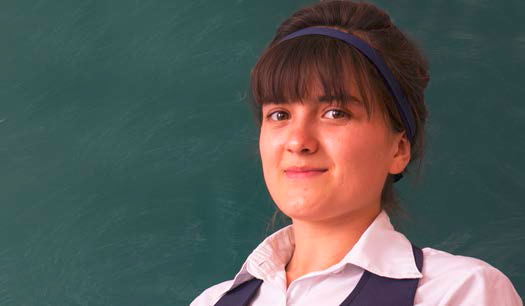
In August 2016, USAID completed the successful food security-focused Land Reform and Farm Restructuring Project (LRFRP). ERC Senior Communications Specialist Sandra Coburn visited the project in June to document its successes and to capture photos and stories for communications products. Communications TDYs have a history of success for ERC and have produced some of the most popular and well-read content for ERC’s audience. These communications materials also support the USAID missions, which may have limited communications capacity, and create new opportunities to reach a broader base of USAID global staff by adding a human face to development programming and demonstrating cross-sector impacts of land projects.
On International Youth Day, ERC created a photo essay about how the LRFRP project was utilizing a public information campaign to educate Tajikistan’s youth through high school classes in the rural Khatlon Province and in law classes at two universities. Youth were identified by the project as influential within their communities, particularly in rural areas, because they can provide new information to families that often have limited education and understanding of legal reforms. The students that participated in the land reform courses were eager to share their knowledge and actively solve community land problems within their local villages.
The photo essay, “From Classroom to Community: How Tajikistan’s Youth are Changing the Way We Look at Land Rights,” captured the stories and photos of several students, demonstrating the ways that they were making a difference by resolving land rights challenges, as well as the linkages between secure land rights, food security, and education. This photo essay marked the first piece for USAID Environmental using Medium, Twitter’s popular photo, and storytelling website. This photo essay was promoted with a dedicated email to ERC’s outreach list and through social media. Written to be an evergreen story, the photo essay can be shared multiple times throughout ERC. This public piece received praise from both land experts and mission audiences and provided USAID’s Land Office with a new messaging platform.

